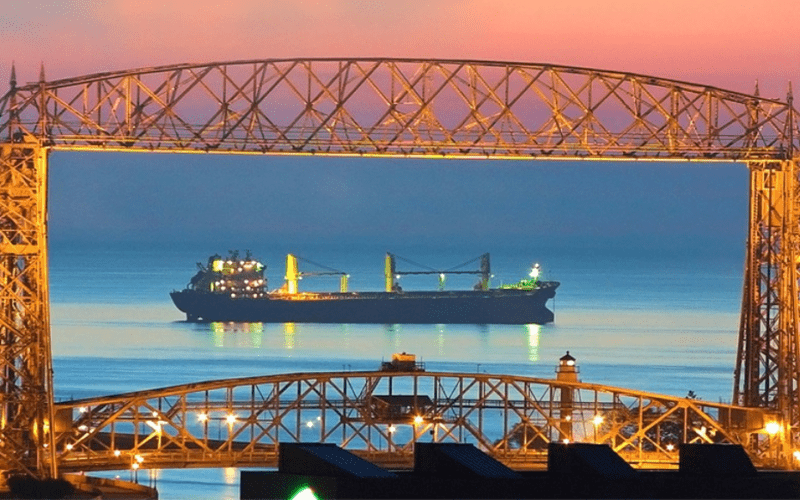(WASHINGTON) — As the year draws to an end, congressional leaders are scrambling to complete work on key legislation of importance to Great Lakes ports and the region’s maritime industry.
Because time is short, individual bills are being rolled together into larger legislative packages to simplify the process. One such package is the National Defense Authorization Act (NDAA), which must be enacted to sustain Pentagon and national defense programs.
Each year congressional leaders from both parties have prioritized the NDAA. In fact, it has been regularly enacted every year for the past 62 years. For this reason, the NDAA becomes a reliable vehicle to move forward many other pieces of legislation – even those not related to national defense.
On Tuesday night, congressional leaders finalized House-Senate negotiations on the fiscal year 2023 NDAA and made the final text available to the public. The legislation includes several key priorities for Great Lakes ports:
Great Lakes Winter Commerce Act
The legislation includes the entire text of the Coast Guard Authorization Act of 2022, which in turn includes a modified version of the Great Lakes Winter Commerce Act. The latter was originally introduced as free-standing legislation (H.R. 1561) in March 2021 by Rep. Mike Gallagher, R-Wis. Companion legislation (S. 576) was introduced in the U.S. Senate that same month by Sen. Tammy Baldwin, D-Wis.
Championed by Lake Carriers’ Association and a coalition of ports, shippers and other maritime industry stakeholders, the original version of the bill would have required the Coast Guard to enhance its winter icebreaking services on the Great Lakes to achieve specific performance standards detailed in the legislation. Great Lakes ports support such standards and believe they will enhance the reliability of our waterway.
The legislation was modified during the legislative process and the final version takes a more incremental approach. First, and most important, it authorizes construction of a new heavy Great Lakes icebreaker at a cost of $350 million. The new vessel must be at least as capable as Mackinaw, the Coast Guard’s existing heavy icebreaker on the Great Lakes.
The legislation also requires that the Government Accountability Office (GAO) submit a report to Congress within a year that evaluates 1) the economic impact of vessel delays on the Great Lakes due to ice coverage; 2) the impacts that performance standards for icebreaking (defined in the legislation) would have on Coast Guard operations in the Great Lakes and other regions of the United States; 3) the fleet mix of icebreaking vessels necessary to meet the standards; 4) the resources necessary to support such an icebreaking fleet.
Within 90 days of the GAO report, the commandant of the Coast Guard must submit to Congress 1) a plan to implement any portion of the GAO recommendations with which the Coast Guard concurs; 2) for each GAO recommendation that the Coast Guard disagrees with, the Coast Guard must explain why; 3) a review of the fleet mix proposed by the GAO; 4) any proposed modifications to current Coast Guard standards for icebreaking in the Great Lakes.
Finally, the legislation establishes a new program of improved data collection and reporting on Great Lakes icebreaking operations and shortcomings.
Although a more cautious approach than the original text sponsored by Gallagher and Baldwin, the final legislation will move the issue forward and help move the agency from a service model based on budget (doing the best they can with what they have) and instead putting in place a service model based on performance metrics (budgeting for and putting assets in place to meet performance standards). Our coalition will continue to work with our legislators to achieve that goal.
WRDA 2022/Soo Lock Reauthorization
The NDAA also includes the entire text of the Water Resources Development Act (WRDA) of 2022, which, in turn, includes language authorizing a new, updated project cost for construction of the new large lock at Sault Ste Marie, Mich. The new authorization is for $3.2 billion, which is the most recent cost estimate for completion of the project. It is important to note that this estimate includes contingencies and it is possible that the lock project could ultimately cost less. Inflationary pressures have caused the total project to exceed its previous authorized level of $922 million.
The new lock is currently under construction and has already received $1.58 billion in funding.
– American Great Lakes Ports Association

